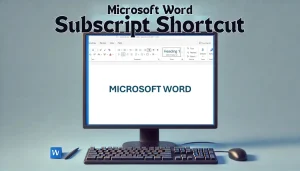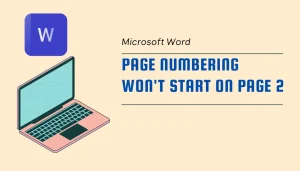Last Updated: August 8, 2025
Have you ever struggled to make your MS Word documents look polished and professional? One of the best-kept secrets of Microsoft Word is its Theme Effects feature. This tool can transform your entire document with just a few clicks, creating a consistent and visually appealing look without the hassle. In this blog post, we’ll dive deep into how to Change Theme Effects in MS Word, providing you with an easy guide that will make your documents stand out instantly.
Whether you’re creating a report, a proposal, or a resume, the right theme can make all the difference. Let’s explore how you can use theme effects to elevate your documents to the next level.
Table Of Contents
What Are Theme Effects in MS Word?
Before jumping into the steps, it’s crucial to understand what Theme Effects are. Theme Effects in MS Word are pre-set options that adjust the look of graphical elements like shapes, charts, SmartArt, and text. They allow you to maintain a consistent and cohesive appearance across all elements in your document, which is especially important for professional or formal presentations.
Changing these effects enables you to tailor the style of your document to your specific needs—whether you’re aiming for a classic look or a more modern feel.
How to Change Theme Effects in MS Word: A Step-by-Step Guide

Step 1: Open Your Document
First things first, you need to open the document in which you want to change the theme effects. MS Word is typically accessible on most devices, so ensure you have a working version.
- In the Word ribbon, find and click the Design tab.
- The Design tab is where you can access various document customization options like Themes, Colors, and Fonts.
Step 3: Click on “Effects”
- Under the Design tab, locate the Effects option. You will see a dropdown icon beside it.
- Click on this dropdown to display various theme effect options.
Step 4: Choose a Theme Effect
- Scroll through the options in the dropdown. Each option provides a preview of how graphical elements will look with that effect.
- Pick a theme effect that best suits the nature of your document.
- When you select an effect, all graphical elements, like charts and SmartArt, will update accordingly.
Step 5: Customize Further (Optional)
- If you want to tweak the theme further, you can manually adjust colors or fonts through the Colors and Fonts options available in the Design tab.
- You can even save your custom theme for future use by clicking Save Current Theme.
Frequently Asked Questions (FAQs) About Theme Effects
1. What’s the Difference Between Themes and Theme Effects?
- Themes refer to the overall look of the document, covering fonts, colors, and effects. Theme Effects, however, specifically control how graphical elements appear.
2. Can I Use Custom Theme Effects?
- Microsoft Word doesn’t directly support custom theme effects, but you can achieve a similar result by editing existing graphics to create your own unique style.
3. Why Should I Use Theme Effects?
- Using theme effects ensures that your document looks professional and consistent throughout, which is particularly valuable for business documents and academic presentations.
4. Do Theme Effects Impact Printing?
- Yes, they do! The selected effect determines the appearance of elements in print, which means a well-chosen effect will enhance the printed version’s readability and visual appeal.
Tips for Making the Most Out of Theme Effects
1. Keep It Consistent
Choosing a theme effect that aligns with the rest of your document’s elements is crucial. Consistency is key to a well-designed document. Avoid mixing different effects that may clash visually.
2. Match with Fonts and Colors
A theme effect works best when it complements the fonts and colors of your document. You can always adjust the Colors and Fonts to align perfectly with your chosen effect.
3. Adapt to Your Audience
Think about the purpose of your document. If it’s for a formal report, a minimal and clean theme effect works best. For a more creative document, you can experiment with bold effects.
4. Preview Before Finalizing
Always preview your document after applying theme effects. Use the “Print Preview” option to see how it will look on paper, especially if it will be distributed as a hard copy.
Common Mistakes When Changing Theme Effects
1. Overusing Effects
Applying too many effects or using overly flashy effects can make your document look unprofessional. Choose something subtle that enhances, rather than distracts.
2. Not Considering Readability
Ensure that the effect you choose doesn’t make it difficult to understand any content in your document. Some effects may change colors or shadow elements in a way that affects readability.
Conclusion
Theme Effects in MS Word are a simple yet powerful way to add a professional touch to your documents. Whether you’re working on a business proposal, a project report, or a presentation, mastering theme effects will give your content a polished and cohesive look. For more detailed guidance, check out Microsoft’s official page on document themes.
The next time you create a document, don’t skip the Design tab—experiment with the available options and see how easily you can transform your work. Give your documents the visual boost they deserve!





